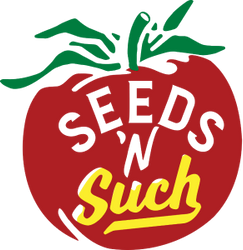
How Do I Know How Many Seeds I Need To Order?
Well I’m ready to order my seeds for next season; and I’m planning to expand my garden area to double or triple that of last season, but how do I begin to decide on how many seeds of each variety to order for planting that much bigger garden? Let’s start with a scaled sketch of our new expanded gardening space and a variety list of all crops to be grown and how many feet of row will be delegated to each.
Carefully transfer the amount of each crop to be grown to the new space, making sure to note areas needing crops rotated if there was a crop in that space the previous season. You must not plant new season crops behind crops of the same family, such as broccoli behind cabbage or cauliflower, or pumpkins behind squash. If you have space available and need a good rotation clean-up crop, sweet corn is an excellent choice. You can also plant a cover crop early for rotation, then cut back growth and plant a later no-till crop.
Then work your list of crops, one by one, and use the seed counts and cultural information provided at the beginning of each crop to determine the amount of seeds required. Sweet corn is good place to begin as it requires so much space and is wind-pollinated, thus requiring a section of the garden where 4 or more rows (never one single long row) are planted together, 30-36 inches apart, for proper pollination. Determine the number of feet of rows to be planted and calculate the number of seeds required, being certain to allow extra seed count for lower germination-rated varieties.
If using a mechanical seeder, you can simply pour in the seeds at the proper setting and sow. When seeds germinate and are well established at 3-5 inches tall, you can go in and thin back to a spacing of 10-12 inches between plants. If using a garden hoe for your planting, simply dig your holes at 10-12-inch spacing and place 2-3 seeds per hill, thinning back to one plant per hill after seedlings are well established.
The hoe-hilling method also works especially well with other large-seeded crops like melons, squash, beans, okra, cucumbers and pumpkins. Many of the small-seeded crops, such as lettuce, greens, kale, mustard, rutabagas, beets and turnips are simply sown in designated spaces and thinned as the harvest season progresses to provide more space for later-maturing plants. Carrots are also sown in rows, but should be covered with sand or seed-starting soil mix, as carrot seeds have a very low emerging pressure capability, especially in heavier clay soil types.
Many other seeds, such as tomato, eggplant, pepper, broccoli, cabbage, cauliflower, onion, etc., are pre-started in containers and later transplanted to the garden after proper acclimation to the current outside weather conditions. But these seeds may also be planted using the hoe-hilling method later in the growing season when the soil temperature has warmed to the desired temperature.
